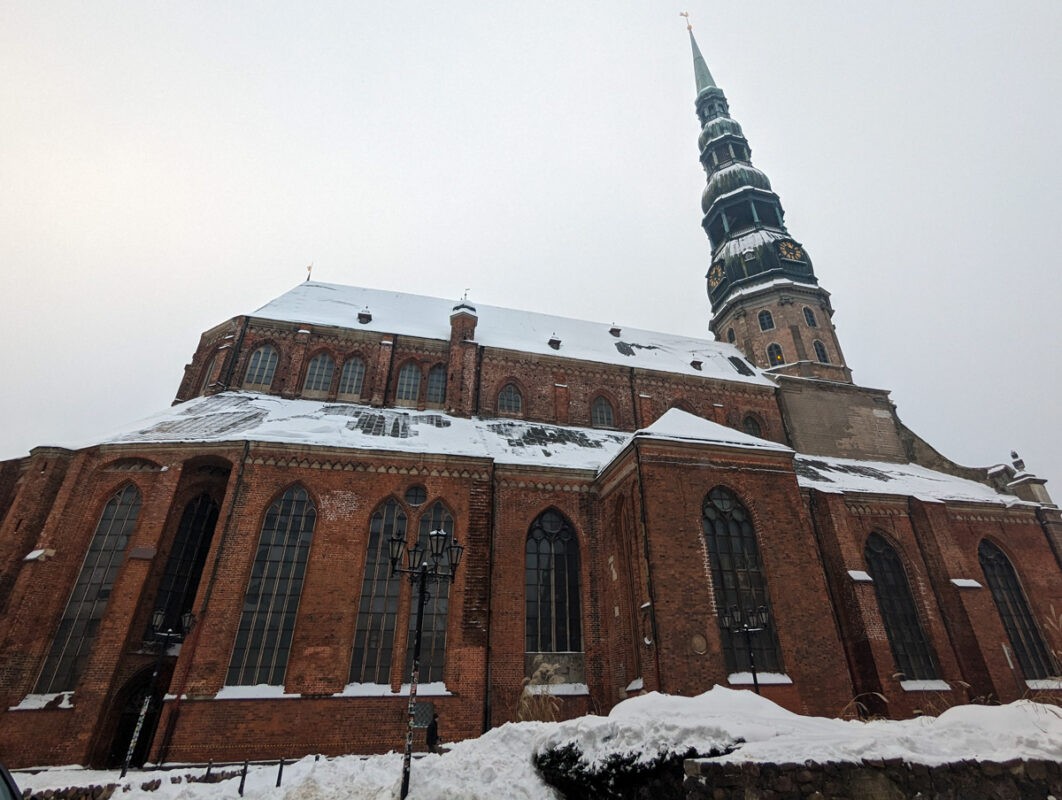Is Riga worth visiting on a mini-break or as a part of a wider Baltics trip? I recently spent a couple of days there, and I’m going into exactly what I thought about it in this article!
The Latvian capital city of Riga is brimming with historic buildings, museums and attractions.
There’s definitely enough here to have a fun day or two visiting; but personally I preferred both Vilnius and Tallinn.
However, that doesn’t mean that I didn’t like Riga and wouldn’t recommend visiting; I’m just keen on managing expectations!
Let’s delve into this blog post and I’ll explain!
Is Riga worth visiting?
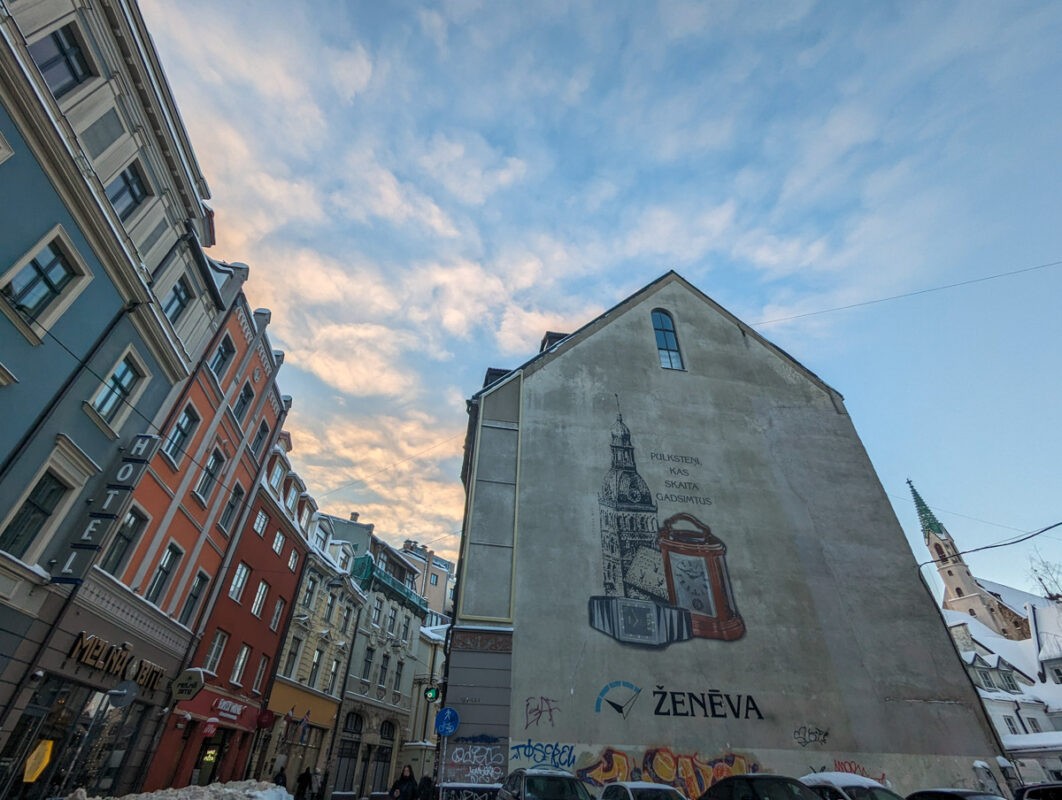
Yes, Riga’s worth visiting, but if you’re trying to choose just one Baltic capital to visit for the first time, I would go with Tallinn (if you’re looking for a compact, beautiful old city) or Vilnius (if you’re looking for a fun vibe and range of attractions).
My favourite Baltic capital was Vilnius, but many people’s is Tallinn. Sorry Riga!
But that doesn’t mean Riga isn’t worth visiting – I still enjoyed my time there and am glad it was a stop on my Baltic trip, I just enjoyed my time in Tallinn and Vilnius a bit more!
If you want to visit two Baltic cities, it makes sense to visit Riga and one of the other two, as Riga sits in the middle.
Plus, certain things about Riga are more appealing than the other two Baltic capitals. These are:
- Riga had the best Christmas market: Tallinn’s gets all the glory, but for me, Riga’s was miles better. It’s slightly smaller but felt like I’d stumbled into Santa Claus’s village with all the lights and range adorable of indoor and outdoor huts (there was even a gingerbread hut selling sweets!).
- The Christmas vibes were best: Maybe this was an overspill from the market, but the Christmas lights seemed more glitzy in Riga!
- Range of architecture: For people who travel for architecture, Riga’s got a whole range of it from different eras, unlike Tallinn which seems to just have buildings from one era.
- Unique activities: There are plenty of things to do in Riga that are unique in the Baltics or have their own twist. For example, boat trips are popular in the summer, it’s home to the biggest market in Europe and the Museum of Occupation was excellent.
Let’s go into these reasons to visit Riga, and a few others, in more detail.
Reasons to visit Riga
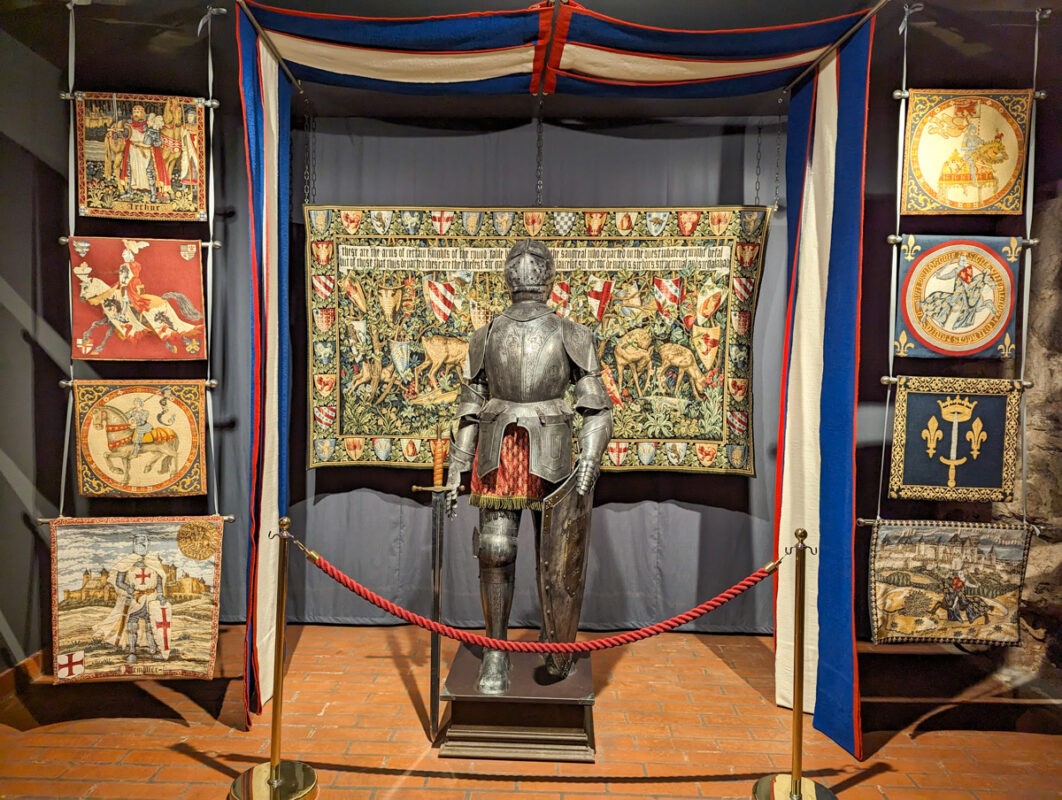
Here are my top reasons to visit Riga!
There’s loads to do
There’s plenty to do in Riga, some of it completely unique!
I started my trip off by going on a walking tour with Riga Free Tours around the old town to learn about its history and culture.
My top tip for visiting any city would always be to do one of these tours – you learn so much that you wouldn’t otherwise and it’s a fantastic way to develop an itinerary for a specific city.
Other things to do in Riga include the House of Blackheads, which is an interesting look at Medieval Riga and its merchant groups, with the dungeons still being part of the historic building.
The Museum of Latvian Occupation is excellent – it covers a similar history to the Museum of Occupation and Freedom Fights in Lithuania, but the information and exhibits are presented better here. That said, the Museum of Occupation and Freedom Fights is situated in the historic KGB offices which is interesting.
The Riga Central Market is the largest market in Europe, and here I got a real sense of the country’s Soviet past; it reminded me of the markets or bazaars found on the Silk Road.
There’s quite a lot of green space in Riga (although when I was there, it was snow-covered space!) making walks around the city very pleasant! I especially liked the large park where the Cathedral of the Nativity of Christ is located.
My mum went on a boat tour when she visited Riga and enjoyed it.
So, there’s plenty to pass a few days, which will give you a good essence of the city.
Fascinating history
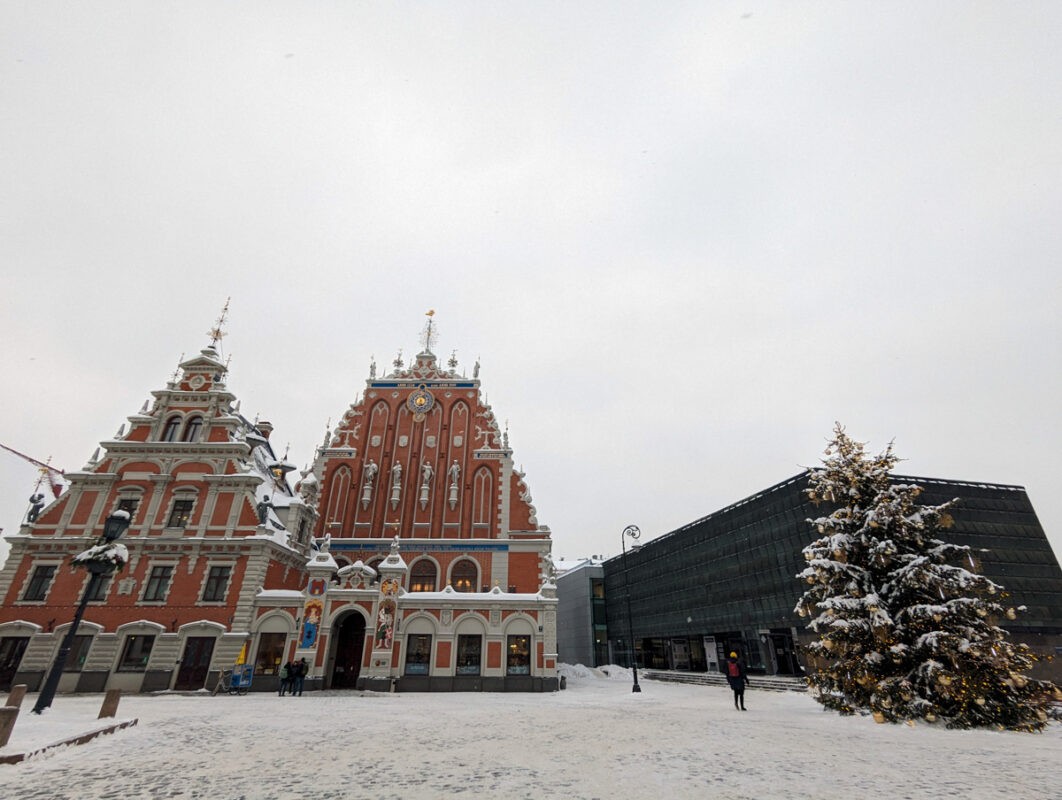
While much of Latvia’s modern history bears similarities to Estonia’s and Lithuania’s, it has some unique history too.
Founded in 1201 by Albert of Buxhoeveden, a German bishop, it quickly became a significant trading centre within the Hanseatic League. This early period was marked by rapid economic growth and the development of distinctive architectural styles.
During the 16th century, Riga endured the turbulence of the Reformation and later, the Polish-Swedish War, leading to Swedish rule in the early 17th century.
Under Swedish control, Riga experienced cultural and educational advancements, including the founding of the University of Latvia in 1632.
The Great Northern War in the early 18th century brought Russian rule, under which Riga continued to prosper as a major trading hub.
This era also saw a flourishing of arts and culture, influenced heavily by Germanic and Russian trends.
The 19th and early 20th centuries were a time of rapid industrialization and population growth. Riga became one of the foremost industrial cities in the Russian Empire.
The city played a significant role in the National Awakening of Latvia, leading to the proclamation of Latvian independence after World War I.
However, the interwar period of independence was brief.
World War II brought immense destruction and hardship, with Riga experiencing occupation by both Soviet and Nazi forces. Post-war, Latvia was absorbed into the Soviet Union, leading to significant demographic changes and industrialization.
The late 20th century was marked by the struggle for independence, culminating in Latvia’s break from the Soviet Union in 1991.
Since then, Riga has developed rapidly, embracing both its historical heritage and modern European influences. Like the other Baltic countries, it adopted tech and is a hub for small businesses and start-ups.
Today, it’s a vibrant city, known for its unique blend of medieval and contemporary culture, and architecture; all of which is a testament to its resilient and multifaceted history.
In recent history, Latvia has had ties with both Russia and the West, sometimes acting as a mediator between the two, although since the war broke out in Ukraine it’s leant much more to the West (there’s a palpable sense of support with Ukraine here and in all the Baltic countries).
So, how can you tap into this history? A free walking tour around Riga is a great start or head to the National History Museum of Latvia to learn more.
You’ll get an essence of its history just by walking around and admiring buildings as well!
It’s a wonderful place for Christmas
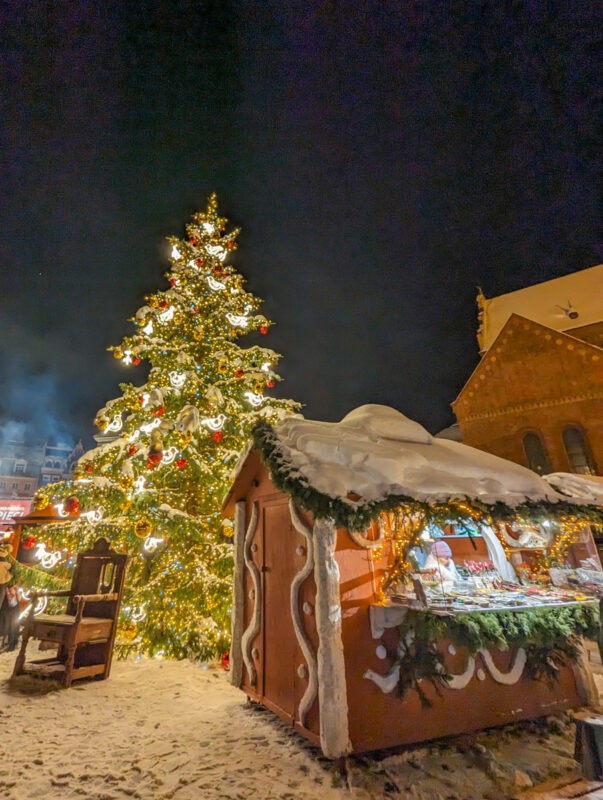
If you want to visit just one Baltic capital on a Christmas break, I highly recommend Riga.
The Christmas market here was the best in the Baltics, and honestly one of the best I’ve ever visited.
The snow helped a lot, but the mishmash of different buildings, unique food stalls (I devoured two servings of Pelmeni), variety of drinks (mulled gin, anyone?), indoor bars, outdoor gingerbread house and huge Christmas tree completely entranced me.
Speaking of: Latvia and Estonia both claim to have invented the Christmas tree. I believe the first may have been in Estonia but Latvia were the first to decorate it – it’s hotly contested though! But regardless, this only adds to its appeal for a festive break!
It’s not just the market where the festive vibes are strong.
The cafe “This Place Doesn’t Need a Name” proudly calls itself “the Christmas cafe” come December, with festive decorations strung all over the interior and exterior.
The entire city glows under soft lights, and jolly music can be heard on every street corner.
I’ve visited numerous Christmas markets all over Europe, and can hand on heart say that there was nowhere like Riga.
Riga’s inexpensive
In the grand scheme of European costs, Riga is typically less expensive than other capitals.
However, prices have risen quite a lot in recent years – my partner recalled it being much cheaper on his trip in 2016, than mine in 2023. I’ll break down all of my costs in a future blog post.
I think it was marginally more expensive than Vilnius but cheaper than Tallinn.
That said, it’s more budget-friendly than the likes of Paris and Rome, so if you’re looking for a cheaper European capital to visit, do consider Riga!
Easy to get around
While Riga doesn’t have a metro system, it’s very easy to explore on two feet.
I was staying close to the station (at Wellton Riga Hotel and Spa) and could be anywhere in the city in a 20-minute walk, with many attractions a 10-minute walk away.
I didn’t use the taxi app Bolt while I was there, but it’s a Baltic company (from Estonia) and it worked exceptionally well in Tallinn and Vilnius, so I’m sure it would also be very efficient for Riga.
There’s also public transport – trams and buses – although as I didn’t use these while I was there I can’t comment on them!
Like Tallinn and Vilnius, it’s very safe too – I felt completely at ease as a solo female traveller there. Plus, again like all the Baltic capitals, most people can speak excellent English.
There’s lots of beautiful architecture

“The building of Riga will never be finished” our guide informed us. “This is because there’s a legend that when Riga is finished, it will fall in the river – and we don’t want that!”.
Unlike Tallinn, Riga is a blend of architectural styles. This nods to its patchwork of history throughout the centuries. While it doesn’t have the same old-town charm as Tallinn, it arguably has the more interesting architecture.
Here are some buildings to look out for while you’re in town:
- Riga Cathedral (Rīgas Doms): Dating back to the 13th century, Riga Cathedral is a prime example of medieval architecture in Latvia. It has been modified over the centuries, blending Romanesque, Gothic, Baroque, and Art Nouveau elements.
- House of the Blackheads (Melngalvju nams): Originally built in the 14th century for the Brotherhood of Blackheads, a guild for unmarried merchants, shipowners, and foreigners, this building is a stunning representation of Gothic architecture with Renaissance additions. It was reconstructed after World War II and again after Latvia regained independence.
- The Three Brothers: This complex of three houses in Old Town Riga is a perfect example of residential buildings from different periods. The oldest, dating back to the late 15th century, reflects medieval building traditions, while the others show the influence of Renaissance and Dutch Mannerism in Riga.
- The Cat House (Kaķu nams): A unique and whimsical example of Art Nouveau architecture, this early 20th-century building is famous for the two black cat statues perched on its rooftops. According to local legend, the cats were originally positioned with their tails towards the Great Guild to spite its members.
- The Freedom Monument: Erected in 1935, this monument symbolizes Latvia’s struggle for independence and freedom. Combining elements of neoclassicism and national romanticism, it is an important cultural and historical symbol for the Latvian people.
- Latvian Academy of Sciences Building: Built in the Stalinist classical style in the 1950s, this building is often compared to the Seven Sisters in Moscow. It represents the Soviet era of Riga’s history and is notable for its height and ornate decoration.
- Riga Art Nouveau Museum (Rīgas Jūgendstila Centrs): Housed in a beautifully preserved Art Nouveau building, this museum is not only an exhibition space but also an architectural landmark, representing the rich collection of Art Nouveau architecture for which Riga is famous.
It’s close to Baltic Sea Beaches
I didn’t have a chance to check these out when I was there, but Riga’s not far from some beautiful Baltic Sea Beaches. If you’re visiting during the summer months (and the weather’s warm – which it certainly isn’t always!), you’re never far from one of these gorgeous stretches of sand.
Here are some beaches to check out while you’re in Riga:
- Jūrmala Beach: Approximately 25 kilometres west of Riga, Jūrmala is the most famous beach destination near the city. Stretching over 26 kilometres, it’s known for its white sandy beaches, shallow waters, and vibrant resort atmosphere.
- Vecāķi Beach: Located about 20 kilometres north of Riga, Vecāķi Beach is a popular choice for its wide, sandy shore and clear waters. It’s well-equipped with amenities and is a favourite among locals for a quick beach getaway.
- Baltic Beach: Situated in the heart of Jūrmala, around 30 kilometres from Riga, Baltic Beach is famous for its healing mud and mineral water. This beach offers a combination of relaxation and luxury, with high-end spa hotels nearby.
- Majori Beach: Also part of Jūrmala and around 25 kilometres from Riga, Majori Beach is known for its lively atmosphere with numerous cafes, restaurants, and entertainment options. It’s a great spot for those looking for more than just sunbathing.
- Melluži Beach: Approximately 23 kilometres from Riga, Melluži Beach is another section of Jūrmala’s extensive coastline. It’s quieter compared to Majori and is ideal for families or those seeking a more peaceful beach experience.
- Vakarbuļļi Beach: Around 18 kilometres from Riga, Vakarbuļļi Beach is a less crowded option, offering a more natural and serene beach experience. It’s perfect for those looking to escape the hustle and bustle of city life.
- Lielupe Beach: About 20 kilometers from Riga, near the mouth of the Lielupe River, this beach is known for its fine sand and peaceful surroundings. It’s a great spot for swimming and sunbathing, especially for families.
There’s great nightlife
Riga is becoming increasingly known for its excellent nightlife.
Thanks to lots of local microbreweries, budget-friendly prices and plenty of venues for every style.
Try Riga Black Balsam, which is widely regarded to be the national drink of Latvia and is quite similar to Jagermeister!
Considerations for visiting Riga
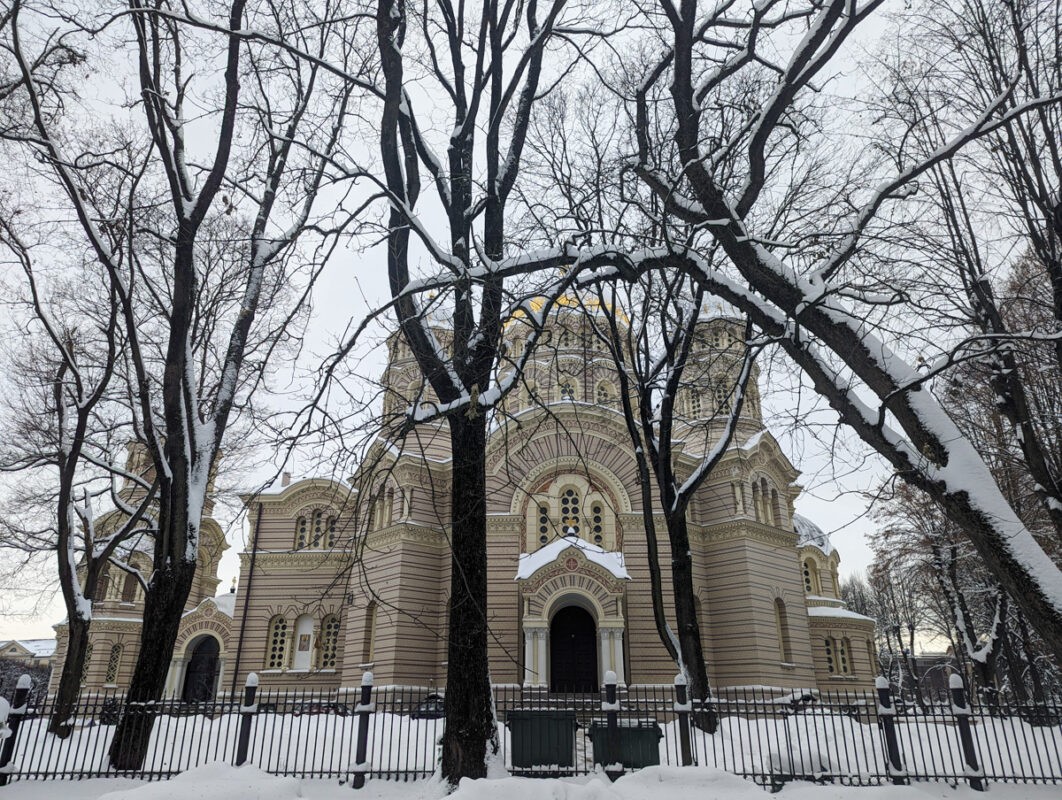
Here are a few things to bear in mind if you’re planning a trip to Riga!
For me, it wasn’t quite as pretty as Tallinn and didn’t have quite the same charm as Vilnius
Christmas markets aside (Riga won in that regard), Riga was my least favourite Baltic capital.
That’s not to say I didn’t like it, but I adored Vilnius and found Tallinn absolutely charming.
Most people I’ve spoken to who’ve visited the Baltics have also said that they found one of the other capitals (most people love Tallinn the best) to be their favourite.
It was pricier than I thought
As mentioned previously, I did think Riga was more expensive than I thought it would be.
This is a good thing for locals (as long as wages are going up with prices!) but it’s also beneficial to be mindful of if you’re planning a trip here.
Like the other Baltic capitals, there wasn’t a huge amount for younger kids
Visiting as a solo traveller, I wasn’t looking for things to do in Riga with kids, but I do think that, if you’re there with children who aren’t yet into history or culture, it might be a bit difficult.
This was the same with all the Baltic capitals.
Who would love a trip to Riga?
Here are the people who’d enjoy a trip to Riga:
- History buffs
- Budget travellers
- Architecture fans
- People on a quick city break
- Tourists looking for a mix of city and nature
- Backpackers exploring the Baltics
So, is Riga worth a trip?
Riga is worth a trip – but honestly, if you only have time to visit one Baltic capital, I’d see the others first – unless you’re visiting for Christmas markets, in which case, book flights to Riga!
If you want to see more of Riga, check out my YouTube video from the city!

